Lewes is situated on the South Downs in the gap where the River Ouse flows southwards. It rewards exploration (provided you are good at climbing hills), and, even having known the town for 30 years, I discover something new every time I visit.
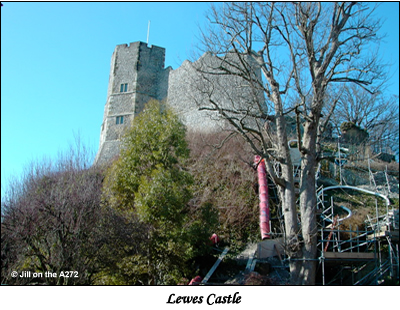
The huge hump of Caburn Hill with its Iron Age banks and ditches dominates the landscape across the river to the east of the town, while the Downs to the west at Offham Hill saw the historic Battle of Lewes in 1264 between Henry III and his barons.

Lewes Castle is a good starting point for any visitor, equal to the climb. Situated on a steep chalk motte, it commands spectacular views of the surrounding countryside and forms the hub of one of the Norman administrative ‘Rapes’ of Sussex, each centred on a castle (others being Hastings, Bramber, Arundel, Chichester and Pevensey). Opposite the castle in one of the town’s many Georgian buildings is the museum, owned by Sussex Past. Up the lane through the well preserved Barbican is The Maltings, home to East Sussex Record Office. [The East Sussex Records Office opened in its new location, The Keep, in October 2013.]
The town has the appearance of having many Georgian buildings, although many hide their much earlier age behind their facades. A particular speciality of the town is the tile hung frontage known as a ‘mathematical tile’ which gives the appearance of a glazed brick (often black), which featured in the BBC series ‘Six More English Towns’ by Alec Clifton-Taylor.
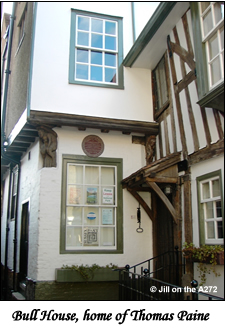
The ‘White Hart Inn’ is one of these older buildings with a Georgian facade. In the 1770s radical writer, Thomas Paine, lived just up the High Street at ‘Bull House’ and spoke at the ‘Headstrong Club’ debating club held here. The ‘White Hart’ was owned by the Duke of Newcastle, was formerly home to his Pelham forebears and was used as a base for his Whig supporters.
It was almost opposite the current town hall, which was formerly ‘The Star’, and where the Tories met. Newcastle employed a good French chef at his own residence, and one of his pupils, William Verrall, was landlord of the ‘White Hart’. In 1759 he wrote a cookery book (still in print), with elegant recipes such as ‘Fillets of Mackerel with Fennel and Gooseberrries’ or ‘Roasted Sweetbreads with Asparagus’.
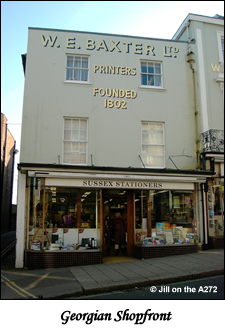
Alongside the more sophisticated dishes he still produced the solid meals the Sussex locals, such as diarist and shopkeeper Thomas Turner from nearby East Hoathly, appreciated. He sometimes visited when he was in Lewes and mentions eating, “boiled beef and greens, a breast of veal roasted and a butter pudding cake”. Lewes still prides itself on its good local produce and holds a Saturday farmers’ market.
Down the hill in Southover is ‘Southover Grange’, built from Caen stone taken from Lewes Priory after the dissolution of the monasteries. The grange’s most famous resident was John Evelyn, the diarist, who lived there as a boy when his grandfather owned it. Evelyn’s grandfather also funded the rebuilding of Southover Church.
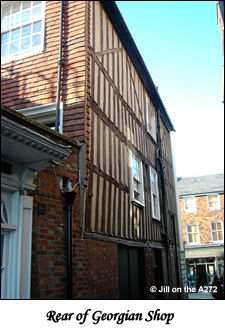
The grange’s gardens are open to the public where an ancient mulberry tree, some 350 years old, stands – now fenced off but still producing fruit. As the grange is also the register office, many weddings have taken place in this charming setting. Close by is Anne of Cleves House, granted to her by Henry VIII as part of her divorce settlement. It is open to the public and, like the castle, owned by Sussex Past.
There were 70 pubs and 7 breweries in Lewes in 1891. Now the sole remaining brewery is the award winning Harveys Brewery down in the Cliffe by the river, which was the area severely affected by the floods of 2000. It has been in the same family for seven generations and was founded by John Harvey in Bear Yard in 1820, moving to the present site in 1838.
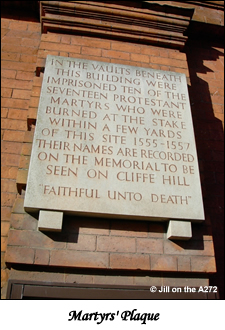
There has always been a strong cultural life in the town – the Bloomsbury set lived in nearby villages, and Glyndebourne Opera is just the other side of the hill.
In 1900, a copy of ‘The Kiss’ was commissioned from Rodin by Lewes resident, Edward Warren, an American, who kept it in the stables at his home. He lent it to the Town Council for display in 1914, but there was an outcry from some elements in the town who objected to the nature of the sculpture, believing it would inflame the passions of soldiers billeted locally, so it was draped to maintain ‘decency’ and returned to Warren. After his death it was bought by the Tate Gallery where it remains, although it returned to Lewes in 1999 for an exhibition on Rodin – this time there were no objections.
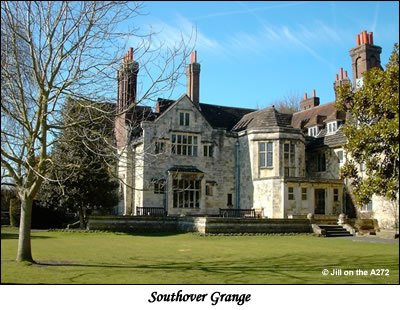
Daisy Ashford, the 9 year old author of ‘The Young Visiters’ [sic] lived here, as did Dr Gideon Mantell who discovered the fossil iguanadon a few miles away at Cuckfield. Dr Richard Russell promoted the use of seawater bathing for health and is credited with popularising nearby Brighthelmstone as a seaside resort – you might know it better as Brighton.
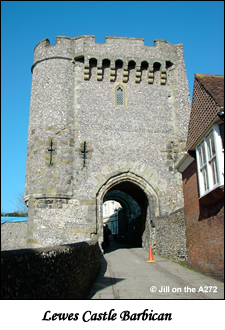
No article on Lewes would be complete without a mention of Bonfire Night, which is a very big event in the town. The six bonfire societies parade through the town in costume, with flaming torches and crosses, to commemorate not only the Gunpowder plot, but also the 17 protestant Lewes Martyrs burned at the stake in the 1550s. They then disperse to their individual bonfire sites. Flaming tar barrels used to be rolled down the High Street and the steep School Hill, but that no longer happens. Although Guy Fawkes and the Pope are still burned in effigy, as well as a topical figure – last year Alistair Darling, Chancellor of the Exchequer, and ‘Uncle Sam’ were featured. Other ‘victims’ include Osama Bin Laden and a local police superintendent who planned to curb the use of firecrackers.
I hope that I have persuaded you to visit this historic old town should you ever find yourself in Sussex. If you have ancestors from Lewes or nearby villages, then you will be able to search in the records office and then explore the town they knew. Even if it doesn’t feature in your family’s history, I can guarantee that there will be plenty to explore and see, you will eat well and be impressed by the variety of independent shops – just be prepared for the steep hills!
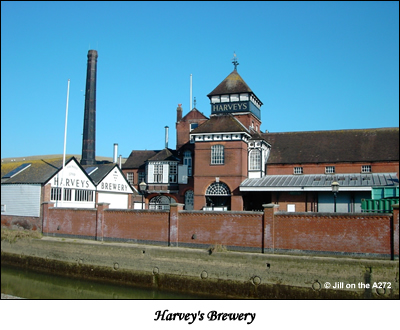
Jill on the A272
© Jill on the A272 2009
Sources and Further Reading
Personal knowledge – 7 years of working there followed by 24 years of regular visits
Sussex Past
Harvey’s Brewery
Tate Gallery – The Kiss
Glyndebourne Opera House
Thomas Paine Society
William Verrall’s Cookery Book (Southover Press, 1988)
Diary of Thomas Turner (Edited by David Vaisey, CTR Publishing, East Hoathly 1994)
Anthology of Sussex. Arundel Press 1950